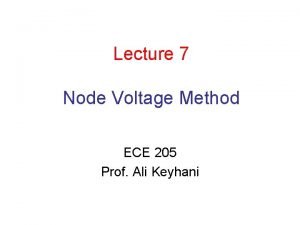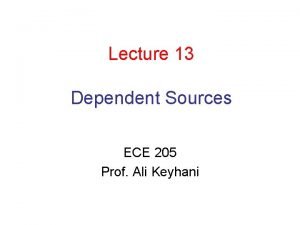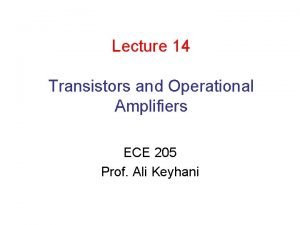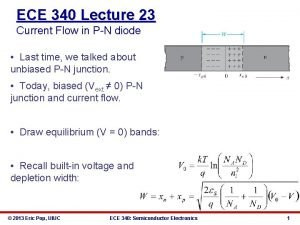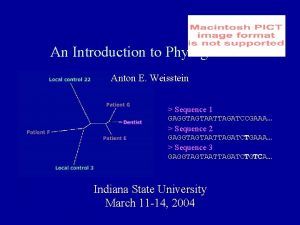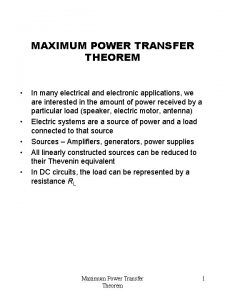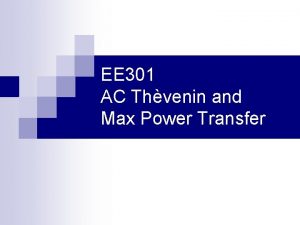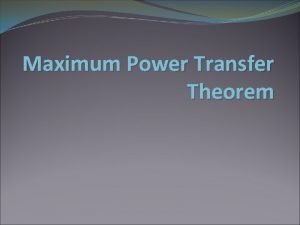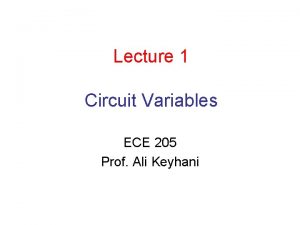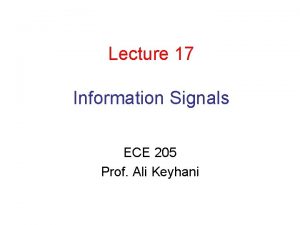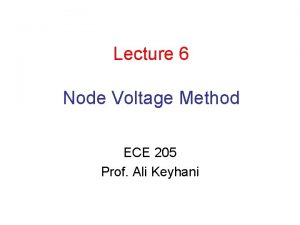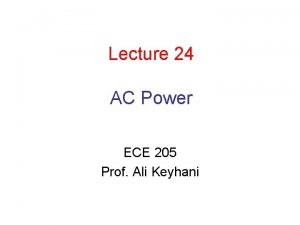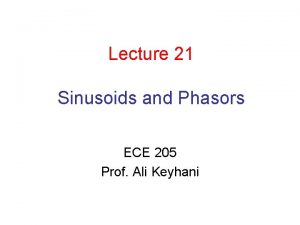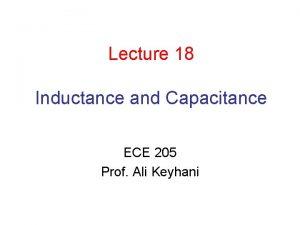Lecture 12 Maximum Signal Transfer ECE 205 Prof















- Slides: 15

Lecture 12 Maximum Signal Transfer ECE 205 Prof. Ali Keyhani

Maximum Signal Transfer • In a given interface maximizing the voltage, current or the power from the source to load is important depending on the application • The goal is to adjust the load to have maximum power, voltage or current • For simplicity source and load circuits are assumed to be resistive • The source circuit is shown by its Thevenin equivalent circuit and the load is represented by equivalent resistance RL

• Applying voltage division results in interface voltage: • If then the interface voltage will be maximum • Ideally when or when load is open circuit the voltage is maximum. Therefore:

• The current delivered to the interface: • For a fixed source the current is maximized when RL is made small: RL 0 • Ideally when load resistance is zero (short circuit) the interface current is maximized:

Maximum Power Transfer • The power delivered at the interface: • Maximum voltage (RL ∞): p 0 • Maximum current (RL 0): p 0 Note: conditions for maximum voltage or current will not lead to maximum power

Maximum Power Transfer • The equation is differentiated with respect to RL to find the maximum power:

• Maximum power transfer occurs when load resistance equals to Thevenin resistance of the source

Normalized plots of current , voltage and power versus RL/RT

Example 1 For a circuit with v. T=5 V and RT=50Ω, and a load resistance of RL=10Ω: A) Find the maximum voltage, current and power levels available from the source B) Determine the actual signal levels delivered to the load

Solution: A)

B) Actual power delivered:

Interface Circuit Design • Sometimes it is necessary to insert an interface circuit between source and load to achieve desired signal levels • The interface circuits are called two -port network – Port connected to the source: input – Port connected to the load: output

Example 2 • Find the load resistance to have the interface signals :

Example 2 Solution: Interface voltage constraint: Interface current constraint:

Example 3 • Design the interface circuit so that the source delivers v 2=2 v to the load and the input resistance seen by the input port is RIN=300 Ω
 Node voltage method
Node voltage method 4 types of dependent sources
4 types of dependent sources Ece 205
Ece 205 Uiuc ece 340
Uiuc ece 340 Ece 205
Ece 205 Absolute maximum and minimum
Absolute maximum and minimum Maximum likelihood vs maximum parsimony
Maximum likelihood vs maximum parsimony Maximum likelihood vs maximum parsimony
Maximum likelihood vs maximum parsimony 01:640:244 lecture notes - lecture 15: plat, idah, farad
01:640:244 lecture notes - lecture 15: plat, idah, farad Maximum power transfer theorem
Maximum power transfer theorem Maximum power transfer ac
Maximum power transfer ac Maximum power transfer formula
Maximum power transfer formula Maximum power transfer calculator
Maximum power transfer calculator Find vx using superposition theorem
Find vx using superposition theorem Maximum power transfer theorem
Maximum power transfer theorem L matching network
L matching network
